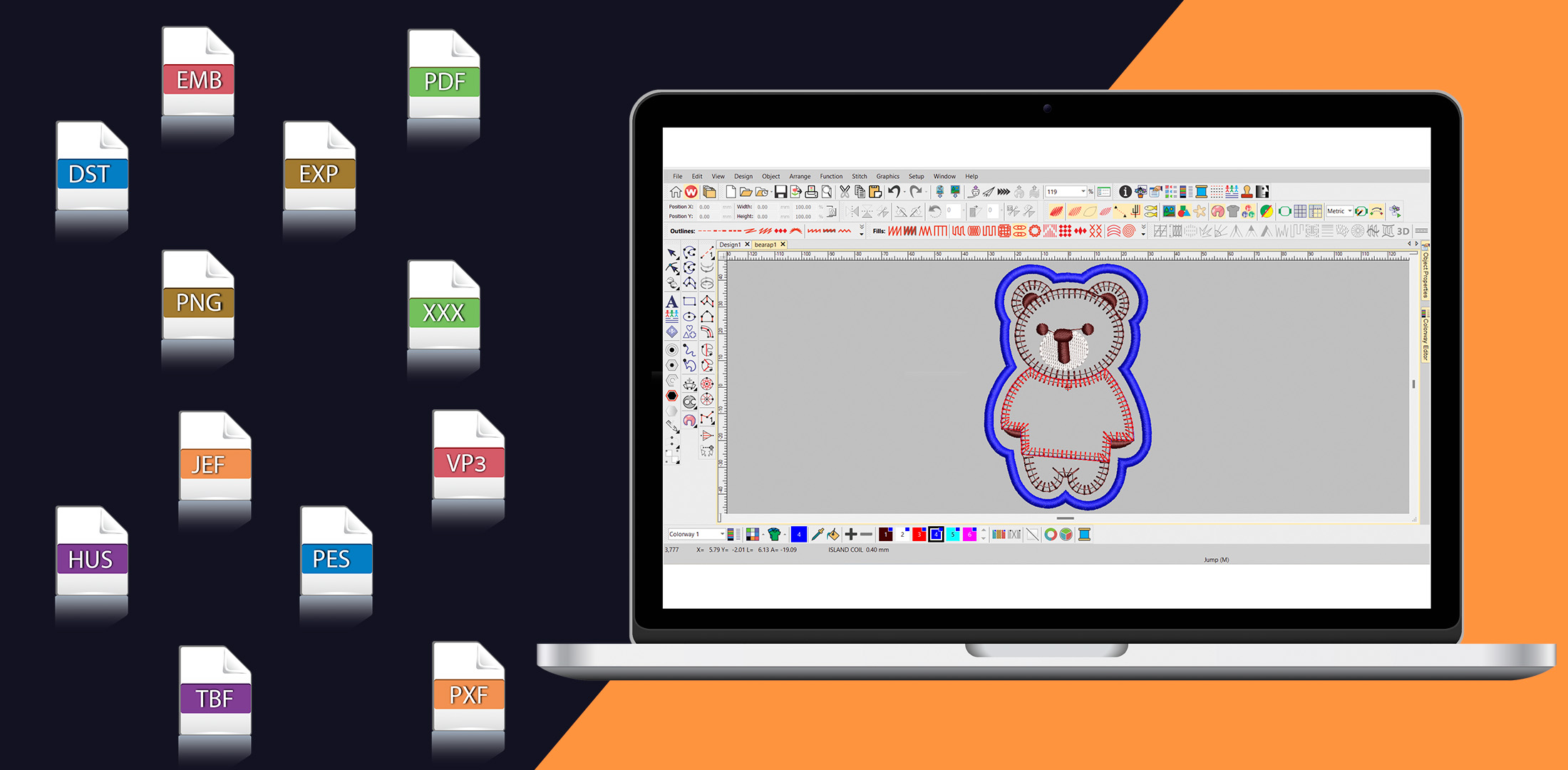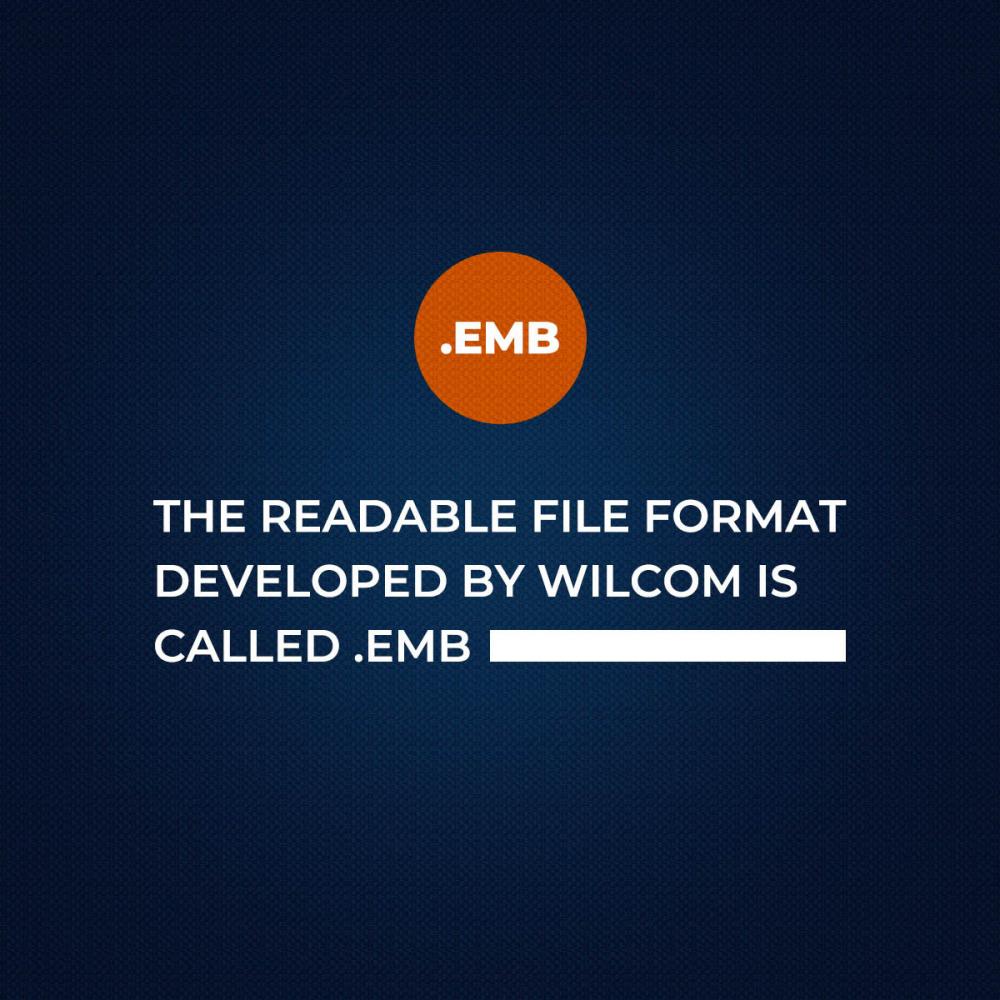So the main formats we use are .dst/Tajima and .exp/Melco formats. Wilcom hatch software is another software we use. These formats in the conversion process rarely get corrupted and are error-free. As the original artwork the commands that are converted in these formats are simply movements of the needle in the x-y cordinates.
Every machine speaks a different language and so we have here in tabular format the readable language for every machine. Please note there are many other file formats and brands you can find other than this list.
Why Are There So Many Types Of Embroidery Machine File Formats?
Every machine that is released in the market needs to have it’s own unique language so the machine or the brand that uses that particular language can have its customers that stay with them. It’s like knowing you can only read books in English, you will buy books in English. The brands out there want you to be their customers for long which is why every time a machine is updated, you can always run that machine with the older formats of the same language recognizable for the Embroidery digitizing.
Readable Digitized Embroidery File Formats
It’s important that you know as many times people will import a .pes file into their software and then save it as the software readable format, which is not really a true readable file. Every time it is converted it has lost some original data in translation.
To further explain, it’s like the difference between a raster and vector art file. A raster file, for example, is like a .png file and has a defined resolution, it could be a low or high dpi, If it’s high, the artwork will remain clean when zooming, if it’s a low dpi the image will become blurred when zooming. The higher the resolution the clearer the image, the larger the file.
Our embroidery digitizing software works much in the same way. We have our readable file formats created within the software using the original node and properties you chose, so if you want to make changes or resize a design it will always be faster and give better results using the readable format over an expanded machine format.
The embroidery machine readable file format developed by Wilcom is called .emb, and is now available within their Hatch embroidery software for home embroiders. It is by far the most advanced readable file format available. The Wilcom platform is both intuitive and intelligent, it puts the user in autopilot and assists in choosing the correct properties for creating production-friendly designs at the click of a button.
Resizing designs, changing fabric types, and generating object-based lettering is something the home industry has never truly seen until now. Being a
Wilcom software user for so many years commercially you realize that their software was the defining difference between the home and commercial markets.
All I can say is we sure have come a long way from when we started in 1998, and we are so excited to see what is to come! We hope you are too!
To showcase
Cre8iveskill s capabilities we have a
free design store on our Website, you can go ahead and download any design in any format you want or are comfortable with.
Can I Edit Finished Digitized Embroidery Files Formats?
You can always revise the file formats of any kind. One thing to remember though is that if you want to edit or resize a file you will always have the best result when using the format recognizable to the software you use.
Wilcom’s readable .emb format used within the Hatch program will allow you to resize files and change all the properties with a design at the click of a button. You can use the “fabric assist” tool to go from Linen settings to Terry Cloth and within seconds the underlay, density, pull compensation, and stitch count will adjust perfectly. But if you bring a PES file into Hatch and convert it to an EMB file it will work, but it will not convert all the original data from original .emb.The data here is lost in transitions. The data lost is an integral part of the actual design if it was present in the first place, so when you lose it in transition you lower your chances of getting a perfect design altogether.
Can I Convert Between Different Types Of Machine Embroidery File Formats?
Although you can convert all the files from different formats like I said before most of the data from the original is lost. It’s like literature, some of your favorite books come from other languages and in some, the meaning of some of the words used in translations are not exactly perfect and that is where the meaning is lost. If I told a translator something very specific in English, chances are it wouldn’t come out exactly the same when being “converted” into Spanish. To avoid that from happening here are a few notes to keep in mind when converting file formats:
It is often best to convert a readable file format (software-specific) into a embroidery machine file format (specificly).
- When converting any file format into a embroidery machine file format, some information like color, stitch type will be lost in the transition.
- Converting between different machine file formats (for example from .DST to .JEF) will harm the authenticity of your design.
To Conclude There Are 3 Main Embroidery Machine File Formats
Expanded digitized embroidery file formats: These formats are embroidery machine file formats such as .dst and .exp. They have smaller size files and As the original artwork, the commands that are converted in these formats are simply movements of the needle in the x-y coordinates. Some information may be lost while the file formats are converted.
Embroidery Machine File Formats: Machine file formats are specifically made to be readable by the different enterprise machines like .EXP, .HUS, .JEF, .PES, .VP3, .XXX, embroidery machine.
Readable File Formats: These file formats can be read and written by embroidery digitizing software. These can be the best editable file formats that can later be converted into.


